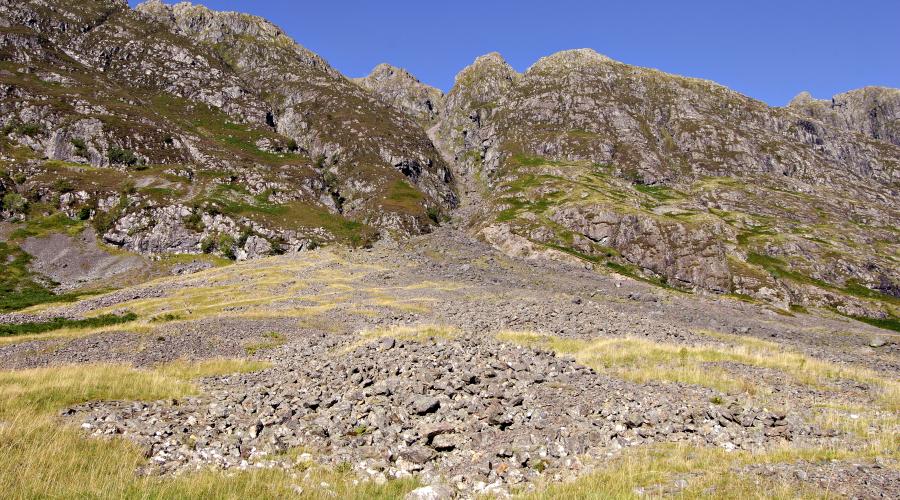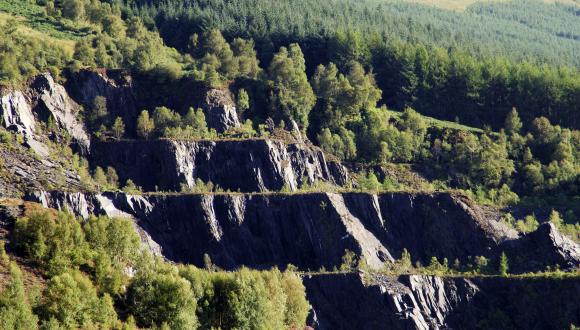
Landslides
Landslides in Scotland range in scale from spectacular, whole-mountainside rock slope failures to small-scale soil creep.
Landslides – also known as mass movements – are a group of landforms created by the downslope movement of rock or soil due to gravity.
Whatever the scale, and whether the movement is fast or slow, all landslides occur when gravity overcomes the strength of the hill slope itself.
Scotland experiences a huge variety of landslide types, from debris flows – our most common landslide hazard – to rock falls and rotational landslides.
Some mass movements are so immense that they’re hard to recognise as landslides, like the vast rock slope failures on Beinn Fhada, Kintail.
Other landslide types such as soil creep are small in scale, moving imperceptibly slowly, and leave only minor rumples on grassy slopes.
Report a landslide
Find out how to contact the British Geological Survey Landslide Response Team.
Learn about landslide hazards on our roads on the Transport Scotland website.




